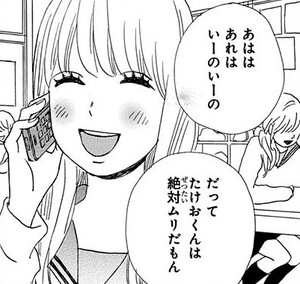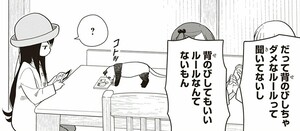That said with だって
Grammar: Emphasis » だって
When a sentence begins with だって, it refers back to the prior sentence, regardless of who said it.
だって isn’t a word itself, but rather a combination of だ and って.
The だ portion is the same as appears at the end of a noun sentence, a sentence which says “[something] is [noun]”.
An example sentence in English would be, “The animal living under the park bench is a cat.”
The って portion is a short form of the quote marker と and the verb 言う (meaning “to say”).
Adding the meaning of this って to our English sentence changes it to, “They say the animal living under the park bench is a cat.”
Any Japanese sentence that ends in だ can have って added to it to change it from “This is X” to “They say this is X.”
Note that “they” can be any other party, so it can be “He said” or “She said” and so on.
Usage
A speaker typically refers back to what they just said to provide context, their reason for their saying it. “I say that because…”
When said following another person’s line, it tends to be contrastive, such as “You say that, but…” However, it doesn’t have to contrast or negate the sentence before it. There’s nothing inherent in だって that requires a contrast. だって can be used to take what someone said and add information to it.
Examples
I say that because I thought it up with だって

A fake kidnapping ploy turns into an actual kidnapping. After the kidnapped child is safe, her father goes after their butler for concocting the scheme. The daughter, Akiko, protects the butler, saying she’s the bad one.
- 晶子:
- 「だってこの誘拐事件を考えたのは、晶子なんだもん!!」
- “I say that because I'm the one who thought up the kidnapping plot!”
I say that because it'd be impossible with だって

Takeo hopes to get into the same college as his girlfriend, Rinko. Going into a mock exam, he listed the top college Rinko is aiming for. However, the results came back saying it would be impossible for him to get into Rinko’s top choice.
Rinko tells Takeo she didn’t do well for that college either, so they should both aim for her second choice. Takeo asks if Rinko is okay with giving up on her top choice.
- 凛子:
- 「あはは あれはいーのいーの」
- “Ha ha, I'm okay with that.”
- 「だってたけおくんは絶対ムリだもん」
- “I say that because it'd be impossible for you to go, Takeo.”
Rinko’s first choice was a women’s college, making her boyfriend, Takeo, ineligible to attend.
You say that, but I didn't hear a rule against it with だって

Standing back to back, Sacchan is slightly taller thank Yui. Yui questions whether Sacchan is standing tip-toed, which Sacchan denied, but Yui looks and sees that Sacchan is.
- さっちゃん:
- 「だって背のびしちゃダメなルールって聞いてないし」
- “You say that, but I didn't hear a rule against tiptoes.”
- 結衣:
- 「背のびしてもいいルールなんてないもん」
- “There's no way there'd be a rule allowing tiptoes!”
